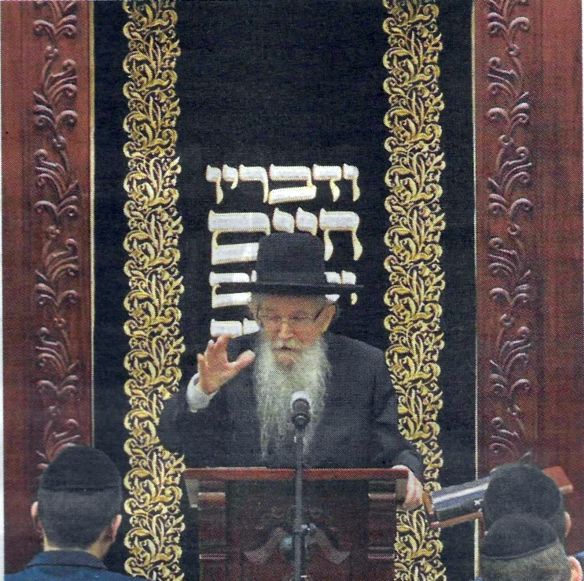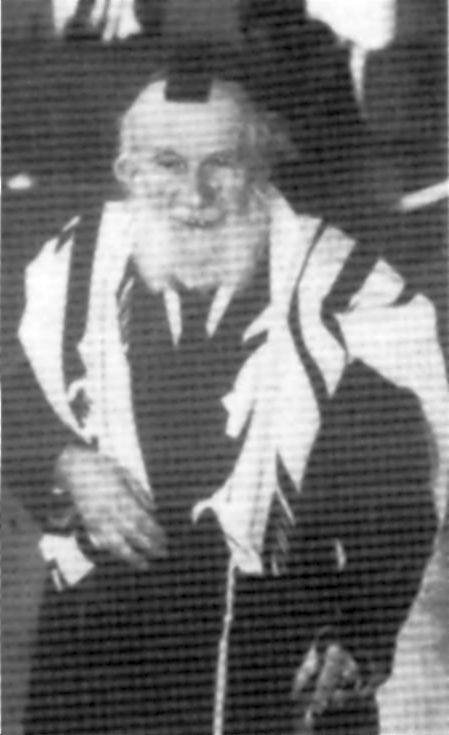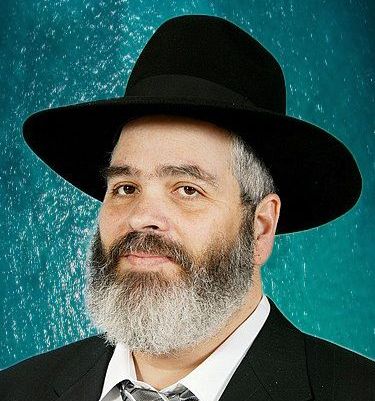  |
|
| ||||||
The next scheduled issue is for Succos. 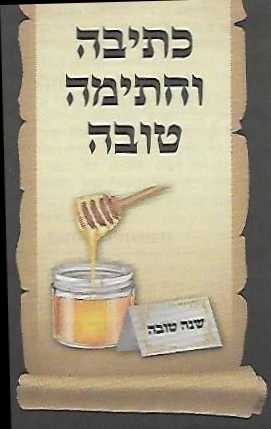
This Google Custom Search looks only in this website. The Israeli Central Bureau of Statistics Reports
There are 9,795,000 people living in Israel as of the end of 5783, a rise of 1940,000 in the past year, the Central Bureau Statistics said Wednesday, as it released new data to mark Rosh Hashanah.
Of those, 7,181,000 are Jewish, or 73 percent, with 2,065,000 Arabs (21%) and 549,000 other minorities (6%).
Of the Jewish population aged 20 and over, 44.2% classified themselves as secular or non religious, 21% as traditional but not very observant, 11.7% as traditional and observant, 11.5% as religious and 10.8% as ultra-Orthodox or chareidi.
Two years before WWII, a talmid from Yeshivas Kelm in Europe visited his parents in Tel Aviv. HaRav Hillel Vitkin had suggested transferring the yeshiva to Eretz Yisroel, and when the talmid returned to Kelm, he presented the idea to HaRav Daniel Movshowitz, who hailed it and said, "If we merit going to Eretz Yisroel, the yeshiva will not be established in Tel Aviv but on Mt. Carmel in Haifa, the site where all declared that 'Hashem is Elokim!'"
The yeshiva gedolah, Nachlas HaLeviim, has been standing for the past forty years on Mt. Carmel. And in expectation of the day when we coronate Hashem, HaRav Uri Weisblum, Menahel Ruchani of the yeshiva, agreed to be interviewed by Yated Ne'eman regarding preparation of the auspicious day when the whole world will stand in judgment.
Rosh Hashonoh is on the threshold. How can we arouse ourselves?
Rabbi Weisblum: HaRav Yisroel Salanter delineated three reasons why the awe and trepidation of Elul has waned and almost disappeared. One reason is routine. The routine of life causes a person to become apathetic, for the better or otherwise.
From his personal diary of the Yomim Noraim in 5697 in Beis Yosef of Pinsk. This article was published in the print edition in 1996 it is now published online for the first time.
Part 2
The Parable of the Lost Prince
A king and his only and beloved son once went hunting in a thick and winding forest. They were joined by an entourage of noblemen. While all were engrossed in the hunt, the prince accidentally lost his way. The king called to him, but received no answer.
All that the king heard was his own voice, echoed by the cruel forest. The prince, too cried: "Father, father, pity me!" But his cries were not heard by the king. All of the searches and the promises of reward to whoever found the child, were of no avail. The prince was nowhere to be found.
The next morning, a farmer, who happened to be passing through the forest, found the child lying on the ground, in a state of torpor. The farmer was delighted with his find of a young boy, for now he would have someone to look after his ducks. He brought the frightened child home, fed him a sparse meal, and cursed him. The child shouted: "I am the king's son." But the farmer continued to beat him.
...
Let us take one of the leaders of the protest, Moshe Rudman, a young hi-tech start-up-er, who left his work in order to devote himself to the protest. He was the one who initiated the storming of the anarchists against the Knesset on the day that the bill was presented to modify the reasonableness argument.
This was designed according to the storming of the pro-Trump people on the U.S. Capitol on January 6, 2021. Needless to say that no one in the reigning media said a word of criticism against this outbreak nor saw in it anything resembling an attack on the citadel of Democracy. Surely, anything that the anarchistic Left does is precisely an attempt to defend it...
Rudman is also the one who organized the mass march towards Jerusalem in the days before the vote, when that event ended up in Sacher Park, near the Knesset, where the participants slept overnight in preparation for an attack on the Knesset.
* * *
Outstanding Articles From Our Archives
Opinion & Comment
Compiled from the sichos of Morenu veRabbeinu HaGaon HaRav Chaim Pinchas Scheinberg, Shlita
If the blast of the shofar did not accomplish its purpose on Rosh Hashonoh, it should at least prepare us to face the final judgment that awaits us on Yom Kippur.
The blasts of the shofar we heard on Rosh Hashonoh were intended to help us face reality. If we did not wake up then, if we still have not changed our ways, our way of thinking, and our way of life - we should do so before it is too late. The sound of the shofar should force us to reconsider what we are doing with our lives.
This is what the Rambam means when he writes, "Even though the sounding of the shofar on Rosh Hashonoh is a decree of the Torah, there is remez in it. Which means to say [that the blast of the shofar is intended to] arouse sleepers from their slumber and to awaken those who are in a stupor from their unconsciousness. They should examine their deeds, repent and remember their Creator - those who forget the truth . . ." (Hilchos Teshuvoh 3:4). The shofar beckons to us; it calls out and reminds us to realize the truth and to face reality.
The Rambam continues, saying that because of our daily routines we lose track of the true purpose of life. Over the course of the busy year, the demands of life - and our lifestyles - distract us from facing the truth. Thus, we lose track of our true purpose in life.
We can, as a result, uselessly waste much of our precious lives. To avoid this, we must seriously evaluate our actions.
Opinion & Comment
by R' Dovid Leitner
Part 2
The gemora (Brochos 26) discusses the reason a person prays three times daily. Shacharis corresponds to Avrohom, Mincha to Yitzchok and Ma'ariv to Yaakov. Each of the Ovos introduced one of these tefillos.
This needs to be understood, as the Rambam clearly states that the actual wording of the tefillos was formulated by the Anshei Knesses Hagedoloh. If so, what did the Ovos actually do, when Avrohom introduced Shacharis, Yitzchok Mincha and Yaakov Ma'ariv?
Rabbi Eliyohu Lopian zt"l explains this with an example that was perhaps more appropriate in his generation. In the early days of telecommunications, before the introduction of mobile telephones, the only way one could speak to a foreign country was by laying a suitable cable to connect these countries together. Telephone conversations were relayed through these cables. It was impossible to carry out a telephone conversation with any country that did not have a cable link with your own.
Each of the Ovos, R' Eliyohu said, laid a suitable cable, that enabled all future generations to communicate with Hashem through prayer, using these links. The length and topic of each "conversation," altered with the progression of time. Initially, each person could request from Hashem whatever and whenever he wanted, using the facility of these pre-laid cables. In later generations, tefilloh took on a more set format, as specified in our Siddur, but these too had to use the same cables as lines of communications to Hashem.
Regular prayer, three times a day, is a well-established concept that has its roots with the Ovos, a fact that is frequently stressed during our tefillos. These telecommunication cables that were laid by our Ovos and allow us to connect directly with Hashem, are not only used by the Jewish people, but also by the nations of the world.
Pharaoh, the king of Egypt, initially refused to acknowledge Hashem and His powers. Hashem systematically smote the entire nation with the ten plagues, until he eventually obeyed His wishes. Initially, Hashem brought the plague of blood, thereby punishing their god, the river Nile. The subsequent plaque of frogs, was directed against the entire Egyptian population, and was only removed after Pharaoh asked Moshe to intercede with Hashem on his behalf. His request for prayer to Hashem was in itself an admission of His powers and existence.
When we stand in prayer before Hashem, we are automatically acknowledging His Supreme and Unique Power to help us and provide for all our requests. Hashem in His Infinite Goodness, created an entire universe that would enable him to continually perform kindness with His creation. However there is a system of Divine justice too, that often holds back this kindness from being administered, owing to our own human defects.
When we stand in prayer before Hashem, we create a large amount of goodwill by acknowledging His supreme Powers, which helps to override the Divine Justice and allows His Kindness to be dispensed. This is the meaning of the posuk (Tehillim 33:22) "Yehi chasdecho Hashem oleinu ka'asher yichalnu Loch - May Your kindness, Hashem, be on us, as we have waited for You." We receive His kindness in direct proportion to the amount of supplication that we make to Him.
IN-DEPTH FEATURES
by Rabbi Dov Eliach
Ever since I met him, I had been urging HaRav Shechter to find the time for us to have a full discussion of the prewar Torah centers that he encountered and of which he was a part. Yet several years passed before the day finally arrived - in Av 5755 - five years before his petiroh, on the first day of Rosh Hashonoh 5760.
I first heard about Reb Shmuel from his fellow Mirrer, HaRav Menachem Manes Moore zt'l of Gateshead, who warmly recommended that I meet him while there was still time. They had escaped from Lithuania together, traveling through Russia and on to Australia, and they later took part in the establishment of the first kollel in America. Another member of their circle was HaRav Shechter's closest friend throughout his life, the gaon and tzaddik HaRav Nosson Wachtfogel zt'l Mashgiach of Lakewood Yeshiva.
I asked Reb Shmuel to tell me about his own "exile" from his home in Montreal, Canada, to the mekomos haTorah in Eastern Europe - in particular Mir and Kelm - which etched themselves so deeply into his soul. Their standards of Torah and mussar, their greatness and elevation of spirit, were discernible in him until the very end of his life. He was a talmid, in every sense, of both Mir and Kelm - and remained so all his life. He was a great man who succeeded in capturing the essence of both places and holding onto it.
Reb Shmuel saved me a lot of work. I didn't have to probe him or prod him to speak. A veteran educator, with a wealth of experience in expressing his ideas to Bais Yaakov students in New York, to young people in Eretz Yisroel and to his followers among the bnei yeshiva of Yerushalayim, he was well-prepared for our meeting. He began it with a fascinating and flowing account that was like one of his master lessons, relevant, orderly and well designed.
In the course of his talk, something of his extraordinary personality was revealed. It was clear that he stood on a higher level than others and was an exceptional yireh Shomayim. His ideas were crystal clear and his views firm, befitting a thinker endowed with a highly developed intuition. Reb Shmuel used to say of himself that he was "a gutteh shmecker (a good sniffer)."
Who could be more reliable and capable of faithfully conveying the ideas of Kelm and the atmosphere of the Torah empire of Mir? I have therefore tried to minimize my editing, to preserve the authentic flavor of Reb Shmuel's account, as far as possible.
|
||||||



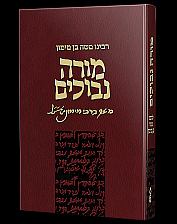
.jpg)
